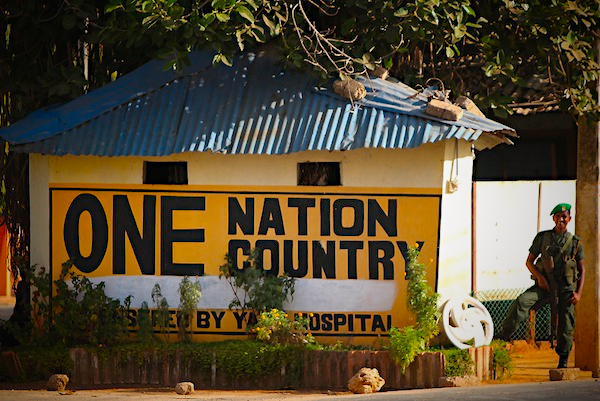Featured image courtesy Steve Chao /Al Jazeera via JDS
First, I must thank Devanesan Nesiah for his response in Groundviews (27 May) to my article on ‘National Reconciliation Policy’ (The Island, 15 May) with his agreement on 7 of the 8 policy areas raised, and clearly expressing his doubts, disagreements and suggestions. As John Stuart Mill said, ‘the usefulness of an opinion is itself matter of opinion’ (‘On Liberty,’ p. 46). There is no infallibility. All these are open for discussion.
Second, his identification of three areas in combating caste discrimination are commendable. But one might ask why insist that the ‘the initiative needs to come from Sri Lankan Buddhists’? Finger pointing is not that ‘conciliatory’, from whichever side it comes.
Third, his endorsement of trilingual policy is appreciated although he has not come up with anything particularly new. I make this comment, since I am strongly of the opinion that this could be the breakthrough in reconciliation and in many other areas: economic development, people’s social advancement and Sri Lanka’s status in world affairs, among others. What I have proposed is not merely a policy, but a ‘language revolution’ which can catch the imagination and enthusiasm of young generations, rural and urban.
Fourth, while I admit that the present district quota system for university admissions is defective (I have said ‘controversial and misused’) the way forward is to rectify the defects and not scrapping it. Because I cannot simply disregard the urban-rural disparities and disparities between and within districts. Of course, there are other ways of uplifting the situation: increase the intake and address the disparities among schools. I cannot however comprehend or agree with the logic when he says, “District quotas, in design and in impact boost further the privileges of the children of the rural elite.” It is difficult for me to comment about all faculties, but my experience in Arts faculties show that underprivileged sections of society do gain entrance thanks to this system.
I also cannot comprehend or agree when Nesiah says “Socio-economic and educational levels of parents and families are difficult to quantify, and therefore, to compensate for.” It may be difficult. What is not difficult? But does that mean that it is not valid or desirable? In my article, what I particularly mentioned was “Similarly, an income threshold can be identified as a criterion for affirmative action, particularly among the estate workers/communities.” I still maintain it. This also should apply in rural areas.
These days I am watching the Sinhala teledrama ‘Siyapath Arama’ (Lotus Field). Sudara is a bright student from an underprivileged family in a rural area. Her mother has to work extremely hard (as a single parent) in a way that appears inhuman, to educate her and two other children. At the last episode (4 June), Sudara is waiting for Advanced Level results. She will gain admission to university, but she contemplates looking for a job instead, because her sibling’s education woud otherwise be in jeopardy. This is a common predicament to my knowledge and experience both in rural and urban areas. This is where affirmative action should apply, however difficult it may be to implement. If I take an example from Australia, there are ‘child support payments’ from the Department of Human Services, to families who are in comparison, much better off. There are methods of quantifying eligibility. We have 51 Departments in Sri Lanka. Do we have a Department of Human Services?
Readers who enjoyed this article might find “The Art of Connection: Two organisations take on reconciliation” and “State reforms as a domestic policy imperative” enlightening reads.
